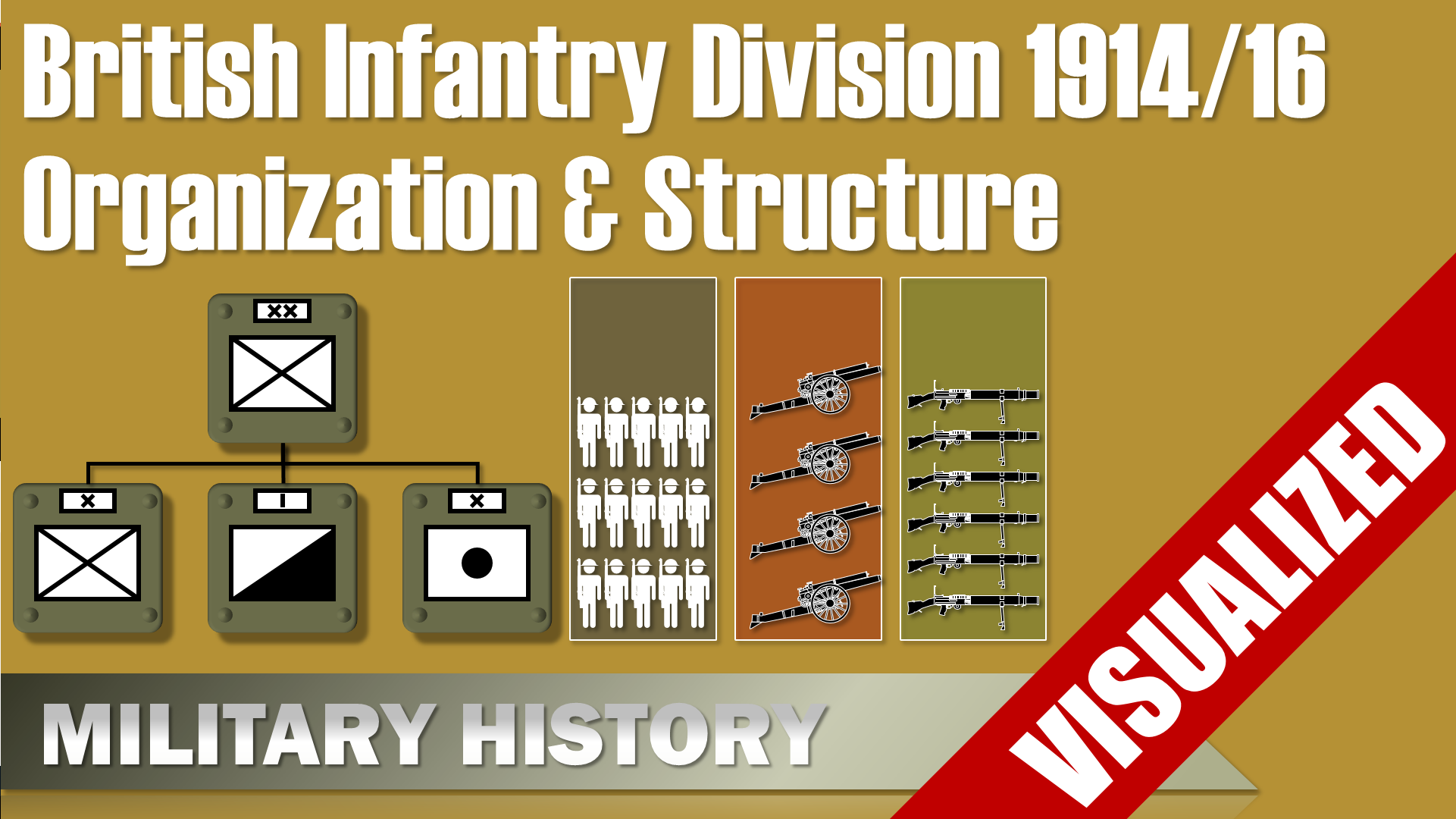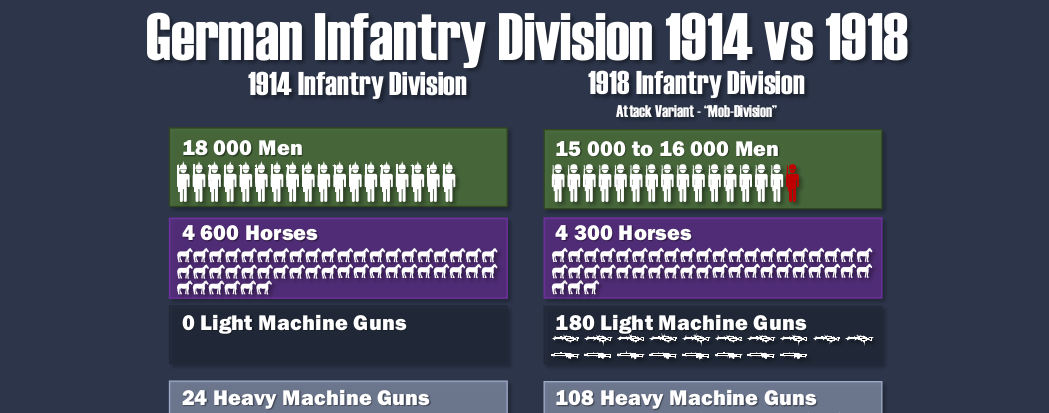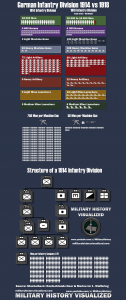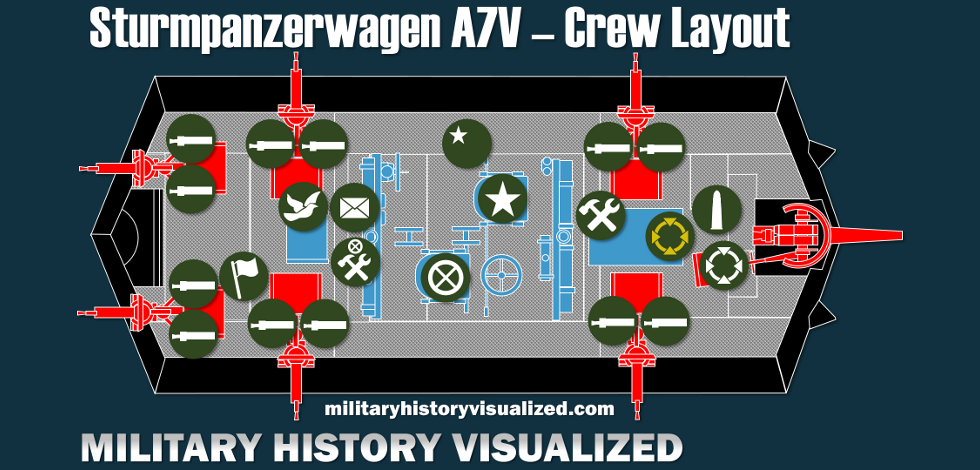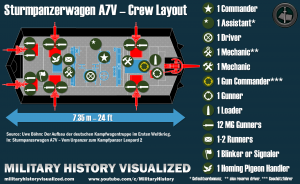Basic Numbers of a 1914 British Infantry Division
In 1914 a British infantry division consisted of about 18100 (18073) men. The division was equipped with 5600 (5592) horses. 24 Machine guns, 54 18 pounder field guns, 18 4.5 in howitzers and 4 60 pounder heavy field guns. (Source: Richard Rinaldi: Order of Battle of the British Army 1914 and others see links below)
Organization of 1914 Division
Now in terms of organization and structure, the division in 1914 consisted of 3 Infantry brigades, which themselves consisted of 4 Infantry battalions each, which consisted of themselves of 4 rifle companies and 1 MG Section each. Furthermore, the division had one cavalry squadron for recon, one signal company, 3 field ambulances, 2 Field Companies of Royal Engineers, 3 Brigades of the Royal Field Artillery each with 3 Batteries, one Brigade of Field Artillery with 3 Howitzer Batteries and finally one Heavy Battery of the Royal Garrison Artillery.
Now, you probably noticed there are no regiments in this structure, and in case of the artillery, there are also no battalions. Furthermore the number of Artillery Brigades is 4, in contrast a German Infantry Division in 1914 had only 1 Artillery Brigade. Yet, those 4 British Brigades have a total of only 72 guns, which is exactly the same number as the German Brigade, which had 4 Battalions. So basically, a British Artillery Brigade is about the same as a German Artillery Battalion in 1914. Now, let’s take a closer look at one of the three Royal Field Artillery Brigades.
Royal Field Artillery Brigade
Such a Brigade consisted of three Batteries, each of this batteries had 6 18 pounder field guns. In total the Brigade consisted of 772 Men, 23 Officers and 748 Horses. Yet, the mainstay of an infantry divisions are always the infantry or rifle companies, so let’s take a look at those.
Rifle Company comparison with German Infantry Company
Each rifle company consisted of 227 Men and in total there were 48 Infantry Companies, which means that almost 11000 (10896) men of the 18100 (18073) served in the Rifle Companies. Similar to the number of artillery pieces in a German Infantry Division from 1914, the number infantry companies was also 48. Yet, a German company had 270 men. Although the total number of men in both division layouts was almost exactly the same, the German division had an additional 2000 men more serving in infantry companies than the British.
Organization in 1916
During the war there were many reorganizations in terms of the division layout. Let’s take a look at original 1914 layout and see what had changed til September 1916. The cavalry squadron, the MG section and the Royal Garrison Artillery Battery had been removed. Meanwhile one additional Engineer Company was added, furthermore, each infantry brigade had now one MG Company and one Light Mortar Battery attached. Additionally, there was one Battalion of Pioneers, 3 Batteries of Medium Mortars and one Battery of Heavy Mortars added. Which is similar to the German developments that also increased the number of machine guns and added mortars to their infantry divisions.
Accuracy
Now, take all these values with a grain of salt, because usually every division was a bit different even without considering combat losses. Furthermore, I combined several different sources here and the author of my main source notes the following: “However, the number of discrepancies among the sources is amazing; even two official history volumes give different numbers for a Regular infantry division in 1914.” (-Richard A. Rinaldi: Order of Battle of the British Army 1914, p. 432)
Related
German Infantry Division 1914/18 – Visualization – Organization & Structure
Infographic – German Infantry Division 1914/1918 – Organization, Structure & Numbers
Sources
Books
Richard A. Rinaldi: Order of Battle of the British Army 1914 (amazon.com affiliate link)
Bruce Gudmundsson: The British Expeditionary Force 1914-15 (amazon.com affiliate link)
| amazon.com | amazon.co.uk | amazon.ca | amazon.de |
Disclaimer amazon.com
Bernhard Kast is a participant in the Amazon Services LLC Associates Program, an affiliate advertising program designed to provide a means for sites to earn advertising fees by advertising and linking to amazon.com.
Disclaimer amazon.co.uk
Bernhard Kast is a participant in the Amazon EU Associates Programme, an affiliate advertising programme designed to provide a means for sites to earn advertising fees by advertising and linking to Amazon.co.uk.
Disclaimer amazon.ca
Bernhard Kast is a participant in the Amazon.com.ca, Inc. Associates Program, an affiliate advertising program designed to provide a means for sites to earn advertising fees by advertising and linking to Amazon.ca.
Disclaimer amazon.de
Bernhard Kast ist Teilnehmer des Partnerprogramms von Amazon Europe S.à.r.l. und Partner des Werbeprogramms, das zur Bereitstellung eines Mediums für Websites konzipiert wurde, mittels dessen durch die Platzierung von Werbeanzeigen und Links zu amazon.de Werbekostenerstattung verdient werden können.
